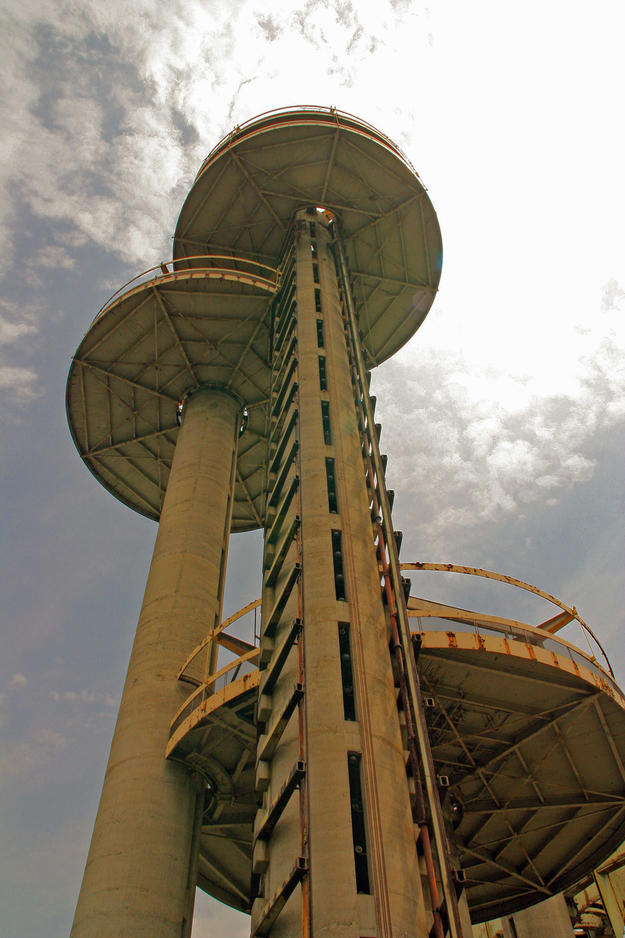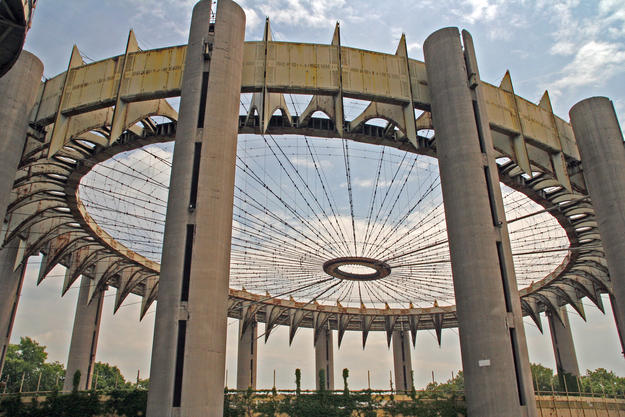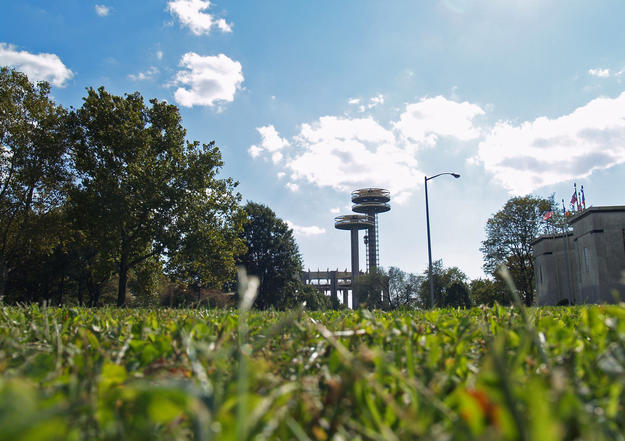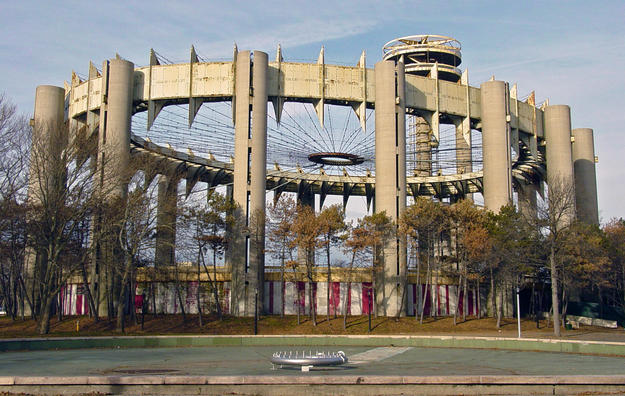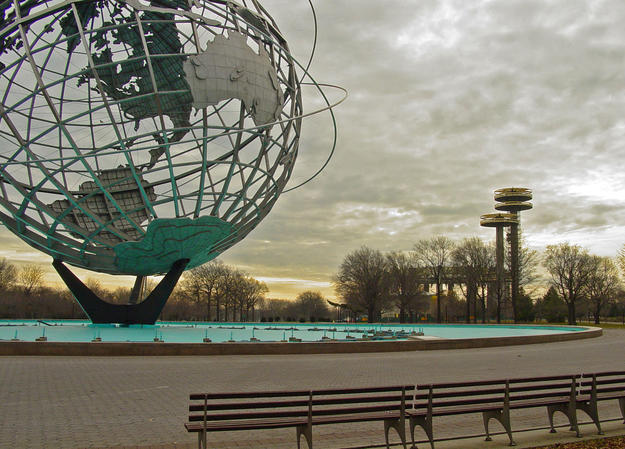New York State Pavilion
Located in New York City's Flushing Meadows-Corona Park, the New York State Pavilion was designed for the 1964 World's Fair. When the pavilion was commissioned, Governor Nelson Rockefeller insisted that it be the largest and tallest of the World's Fair constructions. Designed by architect Philip Johnson, it had an open-air, elliptical structure called the Tent of Tomorrow, a theater in the round, and three towers topped by circular platforms. Measuring 250 feet by 350 feet (76 meters by 106 meters), the elliptical floor of the Tent of Tomorrow was distinguished by a large mosaic map of New York State and a suspended roof of translucent, colored plastic panels. The exterior of the circular theater was decorated with ten large-scale works by artists such as Andy Warhol and Robert Rauschenberg.
Most of the 1964 World's Fair structures, many of which were intended to be temporary, were demolished following the close of the two-year event. Of those not demolished, the New York State Pavilion is the only one that was not adaptively reused with a permanent plan. It has occasionally been used as a skate park and a performance space for Queens Theatre in the Park, but the building's steward, the New York City Department of Parks and Recreation, has struggled to maintain it.
The New York State Pavilion remains a prominent symbol
By 2008, the Tent of Tomorrow was in imminent danger of collapse due to deterioration of the exposed steel structure and the decay of the wood piles that serve as the building's foundation. New York State Pavilion was included on the 2008 World Monuments Watch to help raise awareness about the site’s precarious condition, and we began research to determine the site’s eligibility for inclusion on the State and National Register. One year later, the site was included on the National Register of Historic Places.
The pavilion complex was one of the few World's Fair structures not panned by architectural critics. Ada Louis Huxtable, famed critic for the New York Times, wrote it was a "runaway success, day or night… a sophisticated frivolity… seriously and beautifully constructed. This is 'carnival' with class." Today the New York State Pavilion remains a prominent symbol that is viewed and enjoyed by millions of people each year.

